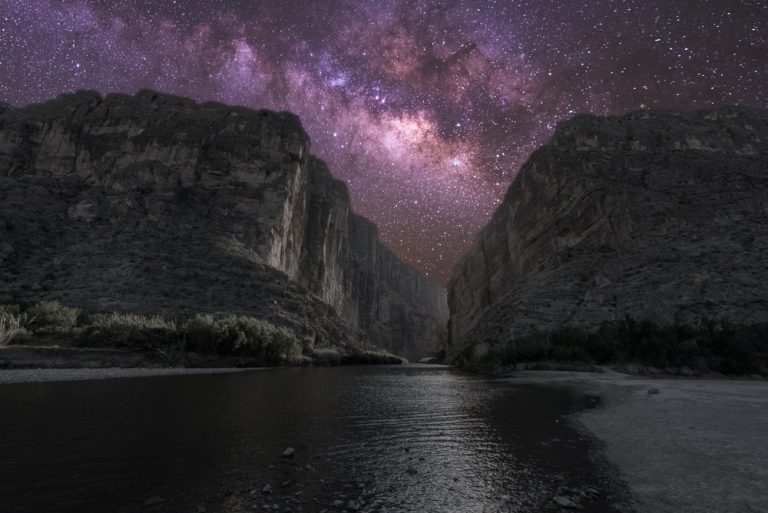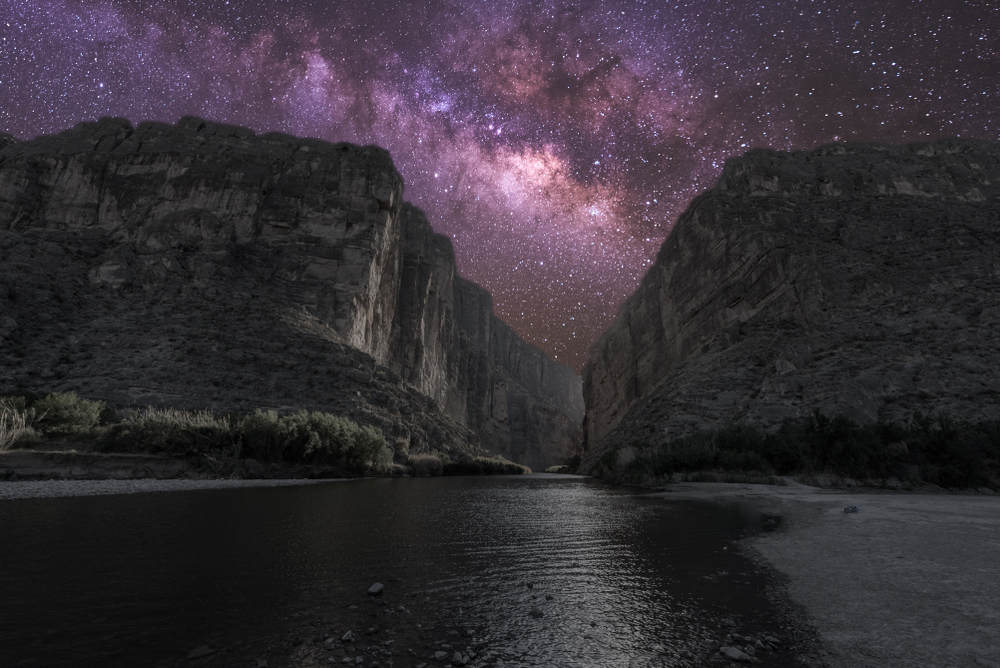
With less than half a million visitors each year, Big Bend National Park is one of the least-visited in the national register — but those who do make the trek are richly rewarded. Offering the promise of “splendid isolation,” this southwestern Texas gem boasts more than 800,000 acres of stunning desert mountain landscape and some of the very darkest skies you’ll ever encounter.
But contemporary visitors should be aware that the land they’re visiting has been inhabited by human beings since long before white colonizers ever set foot in the place. What is today called Big Bend National Park rests on lands first stewarded by Chizo, Apache, Comanche, and other Native Americans, and has served as a place of refuge since prehistoric times.
The Indigenous History of Big Bend National Park

Let’s start at the very beginning, when even the earth itself was different.
Around 10,000 years ago, a global ice age was just ending, and the landscape of southern Texas looked nothing like it does today. Where modern visitors see endless desert sands, the paleolithic nomads who hunted and camped on this lands were ensconced by dense, dark woods, using the large game animals that roamed here for food, clothing, and shelter. This era of Big Bend’s history, which was approximately from 8000-6500 BCE, is known as the Late Paleo-Indian Period.
But the world was warming, and the bison slowly declined, leading the Indigenous peoples who still roamed here to focus instead on smaller game like rabbits while also gathering local edible flora. This evolved hunter-gatherer strategy was a good one, and lasted for more than 7,000 years with few changes. Because these civilizations weren’t quite as nomadic, hunting locally rather than following herds of bison across the land, more robust social structures began to develop and denser population centers emerged. This period, known as the Archaic Period, lasted from about 6500 BCE – 1000 CE.
Around the year 700 CE, Spanish missionaries began to immigrate into the land, and noticed the people who had dwelled in these mountains for centuries: the Chizo Indians, after whom the Chisos Mountains are named. Over the next thousand years, the Chizos were both absorbed and displaced by the Mescalero Apaches — who themselves were later displaced by yet another group of Native Americans, the Comanche. In fact, much of what was once known as the Great Comanche Trail is today a path many visitors to the area follow: U.S. 385. Of course, as the 20th century progressed, so too did colonization, and by 1875 CE, the Comanche, too, were forced from this land that had been under the stewardship of Native Americans for millenia.
Paying Respect to the Land
While walking across the dramatic landscape of Big Bend National Park today, you’re participating in a history that stretches back for thousands and thousands of years. Knowing some of that context and working toward a respectful observation of pre-existing cultures is important to both the experience itself and the ongoing health of the land.
Reading histories like this one is a great start; the NPS website also has a lot of great information about the First Inhabitants of the Big Bend National Park area. You can also look up whose land you’re standing on, both in our national parks and elsewhere in the world, at Native Land.
Finally, we encourage campers to always respect the tenets of Leave No Trace. Full write-ups of the principles can be found at the organization’s website, but the movement’s title says it all: when you visit a protected landscape like Big Bend National Park, leave it exactly as you found it, packing out everything you’ve packed in and leaving nothing but (light) footprints.
Future generations will thank you when they, too, can visit and fully experience this ancient, storied land.

